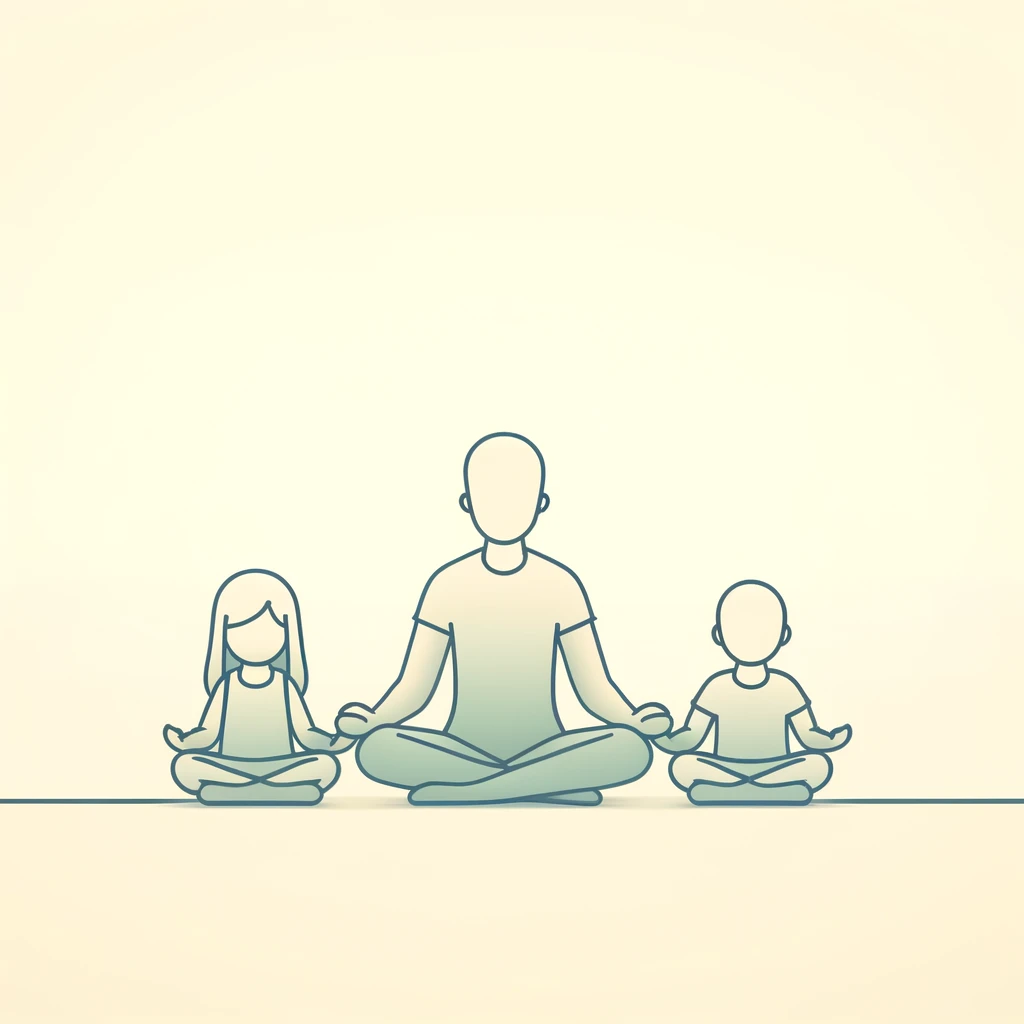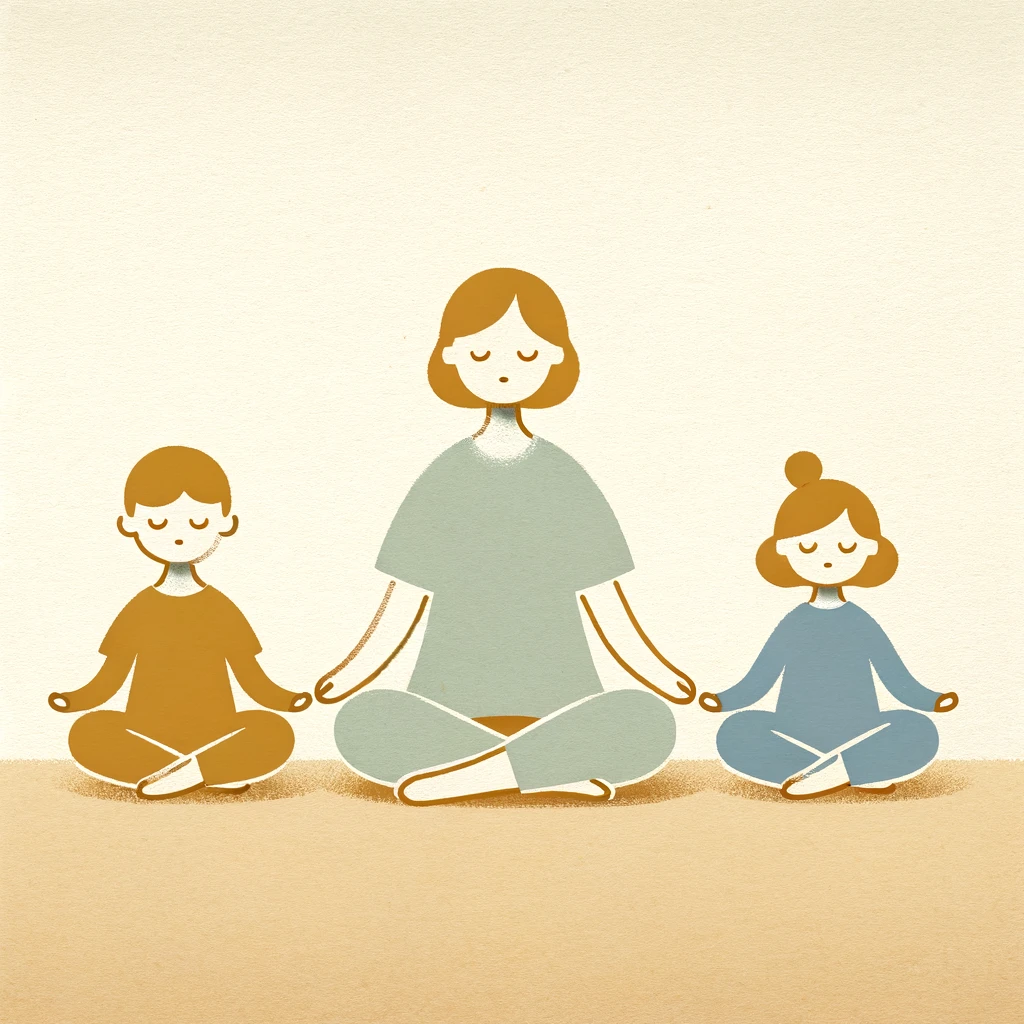Finding moments of peace and connection with our loved ones can be challenging. Imagine creating a sanctuary of calm within your home, where each family member can find solace and strength together. Family meditation sessions offer this opportunity, fostering a sense of togetherness and tranquility amidst the chaos of daily life.
By dedicating just a few minutes each day to mindful practices, you can nurture deeper bonds, enhance emotional well-being, and cultivate a more harmonious household. Picture your family sharing peaceful moments, understanding each other better, and growing closer through shared mindfulness.
Join us on this journey as we explore practical and enjoyable ways to integrate family meditation into your routine. Let’s create a mindful space where everyone feels valued, understood, and connected.
Preparing for Family Meditation
Starting a family meditation practice can be a beautiful way to bond and find peace together. Here’s how to set the stage for successful and enjoyable sessions.
Choosing a Convenient Time
Finding a time that works for everyone is crucial. Early mornings or just before bedtime are often great choices, as these times can set a peaceful tone for the day or help wind down before sleep. Consistency is key, so try to stick to a regular schedule.
Creating a Calm and Comfortable Space
Setting up a designated meditation area can make a big difference. Choose a quiet, comfortable spot in your home where everyone can sit without distractions. You don’t need much space – just enough for everyone to sit comfortably. Consider adding a few cushions, blankets, or even a soft rug to make the space inviting.
Gathering Necessary Items
To enhance the meditation experience, gather a few simple items:
- Cushions or chairs: Provide comfortable seating options for everyone.
- Blankets: Great for added comfort and warmth.
- Soft lighting: Dim lights or use candles to create a serene atmosphere.
- Calming sounds: A sound machine or soft music can help set the mood.
By preparing thoughtfully, you create a welcoming environment that encourages everyone to participate and enjoy the meditation sessions. Remember, the goal is to make this a special time for your family to connect and find peace together.

Simple and Effective Family Meditation Techniques
Family meditation doesn’t have to be complicated. Here are a few easy and enjoyable techniques to get you started.
Breathing Exercises
Breathing exercises are a simple yet powerful way to relax and center the mind.
Deep Breathing for Relaxation
Sit together in a comfortable position. Take slow, deep breaths, counting to four as you inhale and to four as you exhale. Encourage everyone to feel their breath filling their lungs and then slowly leaving their bodies. This practice helps calm the nervous system and can be very soothing, especially for younger children.
Counting Breaths Together
Another fun method is to count breaths together. One person starts by saying “one” on the inhale, the next person says “two” on the next inhale, and so on. This not only helps with focus but also creates a sense of rhythm and togetherness.
Guided Imagery
Guided imagery is perfect for engaging the imagination and creating a sense of peace.
Visualizing a Peaceful Place
Ask everyone to close their eyes and imagine a place where they feel completely safe and happy. It could be a beach, a forest, or even a cozy room. Guide them through this scene, describing the sights, sounds, and smells. This helps to calm the mind and reduce stress.
Storytelling Meditation with Positive Themes
Create a short story with positive, calming themes. As you tell the story, invite everyone to close their eyes and visualize the scenes. This can be a magical journey that helps everyone to unwind and connect with their inner calm.
Body Scan
The body scan technique teaches awareness of physical sensations, promoting relaxation.
Recognizing Tension and Relaxation
Guide your family through a simple body scan. Start at the feet and slowly move up to the head, asking everyone to notice any tension and then consciously relax those areas. This practice helps children and adults alike become more aware of their bodies and release physical stress.
By incorporating these techniques, you can create meaningful and enjoyable meditation sessions that are accessible to people of all ages, making mindfulness a family affair.

Making Meditation Fun for Kids
Incorporating fun elements into meditation can help keep children engaged and excited about the practice.
Playful Elements
Adding playful aspects to meditation sessions can make them more appealing to kids. Try turning mindfulness exercises into games. For example, you can play “breath counting” games where each child counts their breaths and tries to reach a certain number.
Another idea is to play “stillness statues,” where everyone sits as still as possible, like statues, and the last one to move wins. These games make meditation feel less like a chore and more fun.
Mindfulness Apps for Kids
There are several apps designed specifically for children that offer guided meditations and mindfulness activities. Apps like “Headspace,” “Smiling Mind,” and “Moshi” provide engaging, age-appropriate content that can make meditation more accessible and enjoyable for children. These apps often include stories, guided visualizations, and soothing sounds that capture children’s attention and help them relax.
Creative Mindful Activities
Encourage creativity by incorporating mindful drawing or coloring into your sessions. Provide coloring books or plain paper and crayons, and invite the kids to draw or color mindfully. Ask them to focus on the colors and the motion of their hands as they create. This practice can be a calming and enjoyable way for children to express themselves while learning mindfulness.
By making meditation fun and engaging, you can help your children develop a love for mindfulness that will benefit them throughout their lives.
Addressing Common Challenges
Introducing family meditation can come with its own set of challenges. Here are some practical tips to overcome them.
Managing Distractions and Maintaining Focus
Distractions are inevitable, especially with kids. To manage this, choose a quiet time of day and a space with minimal interruptions. Setting a gentle ground rule, like keeping silent for a few minutes, can help maintain focus. Using background sounds, such as calming music or nature sounds, can also mask minor distractions and create a soothing environment.
Handling Resistance or Reluctance from Family Members
It’s natural for some family members to feel reluctant or resistant to new practices. Address this by introducing meditation gradually. Start with very short sessions, even just a couple of minutes, and slowly increase the duration as everyone becomes more comfortable.
Explain the benefits in a relatable way, focusing on how meditation can help with stress, sleep, and overall happiness. Encouraging each person to share their experiences and thoughts can also foster a sense of involvement and ownership.
Adapting Practices to Suit Different Ages and Needs
Every family member is unique, and meditation practices should reflect this diversity. For younger children, keep sessions brief and engaging with stories or games. Older kids and adults might appreciate more structured practices like body scans or guided imagery.
Be flexible and open to trying different techniques until you find what works best for your family. Encouraging feedback after sessions can help you tailor the practices to suit everyone’s preferences and needs.
Embrace the Journey Together
Starting a family meditation practice is a beautiful step toward a more connected and peaceful home. Remember, the journey is just as important as the destination. Be patient, stay flexible, and enjoy the process of discovering mindfulness together.
Each session is an opportunity to grow closer, better understand one another, and cultivate a sense of calm that everyone can carry into their daily lives. Embrace this journey with an open heart, and watch as your family blossoms through the shared experience of meditation.

Leave a Reply